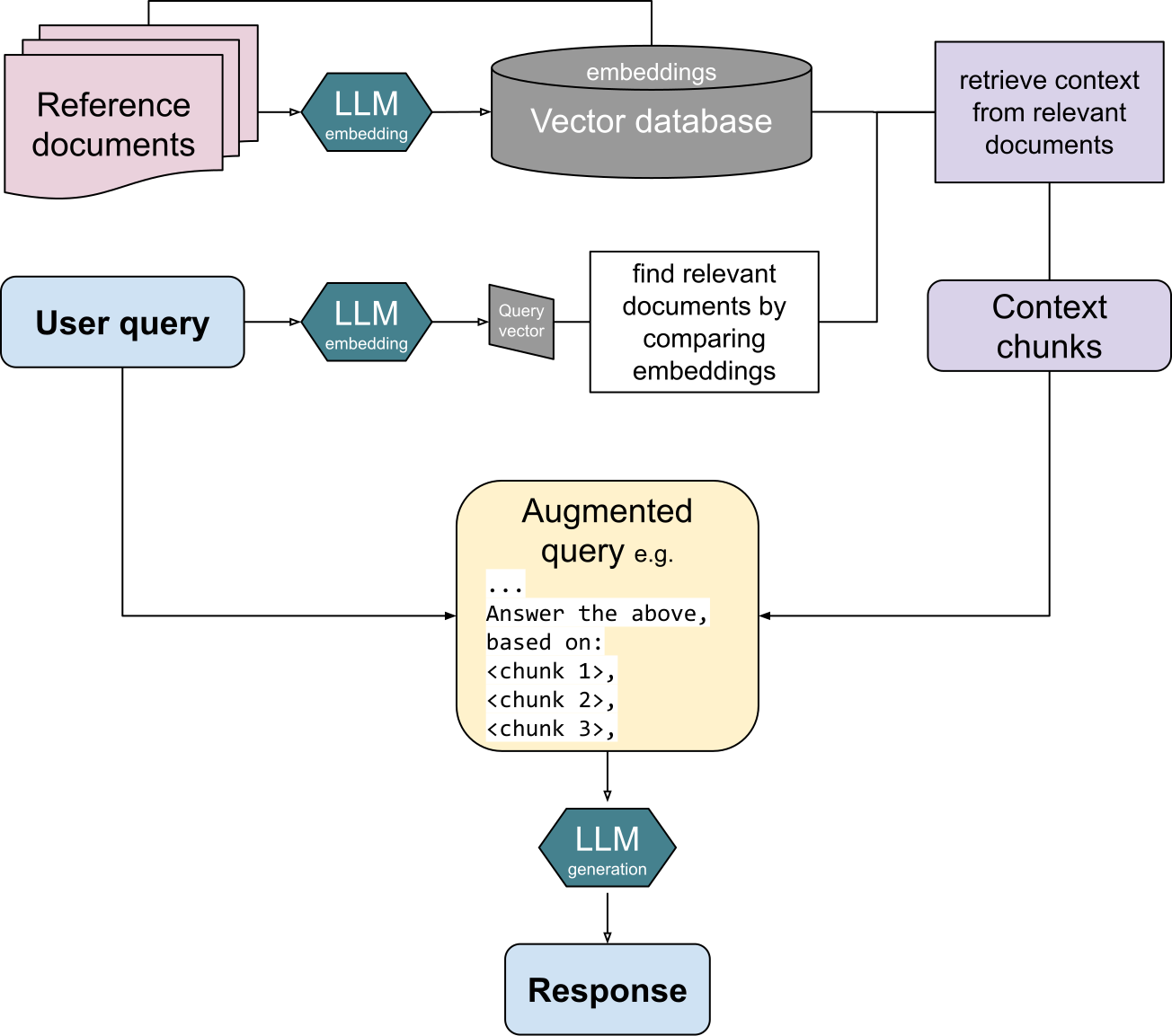What is Retrieval-augmented Generation (RAG)?
Learn about retrieval-augmented generation (RAG), a method that combines AI models with external data retrieval for accurate, context-aware responses.

Retrieval-Augmented Generation (RAG) is a technique used in natural language processing (NLP) that combines information retrieval systems with generative language models. Instead of relying solely on pre-trained knowledge, RAG allows models to access external information sources like databases or documents to produce more accurate and relevant outputs. This method is particularly useful when dealing with specialized topics or dynamic information that changes frequently.
RAG is increasingly being used in various applications, including question-answering systems, document summarization, and conversational agents. By leveraging external knowledge, it enhances both accuracy and reliability, making it a valuable tool for businesses aiming to improve their AI-driven processes.
What is RAG?
Retrieval-Augmented Generation (RAG) is an advanced NLP framework designed to improve the quality of AI-generated text. It achieves this by combining two components: a Retriever and a Generator. The retriever searches for relevant information from external sources based on a user query, while the generator processes the retrieved data along with the query to generate a coherent response.
Unlike traditional generative models that rely purely on their pre-trained knowledge, RAG can access up-to-date information and domain-specific data. This makes it especially effective in specialized industries like legal, healthcare, and finance where accuracy is critical.
For example, if a model is trained to answer questions about medical conditions, it can use a medical database to fetch relevant information before generating a response. This approach not only improves accuracy but also reduces the risk of generating outdated or incorrect information.

How RAG Works
RAG operates by integrating two main components:
Retriever
The retriever searches through a knowledge base or document repository to find relevant pieces of information based on the user’s query. Common retrieval methods include BM25, Dense Passage Retrieval (DPR), and vector-based search systems like FAISS.
Generator
Once relevant information is retrieved, the generator (typically a large language model like GPT-4) processes the query along with the retrieved documents to produce a response. This combination allows the model to be both knowledgeable and contextually aware.
Process Overview
- The user inputs a query or prompt.
- The retriever fetches relevant documents from the knowledge base.
- The generator produces a response by conditioning on both the query and the retrieved documents.
This process makes RAG especially useful for tools like Airparser, which can extract structured data from documents while integrating relevant contextual information to enhance output accuracy.
Applications of RAG
RAG has numerous practical applications across various industries:
Question-Answering Systems
RAG is particularly effective in open-domain question-answering systems, where user queries can be about virtually anything. By using a retriever to fetch related documents, the system can provide accurate and relevant answers.
Document Parsing and Summarization
Tools like Airparser can greatly benefit from RAG by enhancing document parsing capabilities. For instance, when extracting information from PDFs or emails, RAG can provide more precise outputs by referencing external knowledge bases. If you’re using Airparser, integrating RAG can make schema extraction smarter by allowing the system to access domain-specific data during the extraction process.
Conversational Agents
Chatbots and conversational AI systems can become more accurate when using RAG, as it allows them to fetch relevant data before responding to user queries.
Information Retrieval Platforms
RAG can improve search engines by providing not only document retrieval but also coherent summaries of the retrieved information.
Challenges of RAG
Despite its benefits, RAG has some limitations:
- Retriever Dependency: The system heavily relies on the quality of the retriever. Poor retrieval can result in irrelevant or inaccurate outputs.
- Latency Issues: The retrieval process can introduce delays, making real-time applications challenging.
- Knowledge Base Maintenance: Keeping external knowledge sources updated is essential to ensure accuracy.
Conclusion
Retrieval-Augmented Generation (RAG) offers a promising way to enhance the accuracy and relevance of AI-generated text. By combining retrieval systems with generative models, it enables applications like Airparser to provide more precise and contextually aware outputs. As RAG technology continues to evolve, its integration into various AI tools will likely become a standard approach to improve reliability and user experience.





